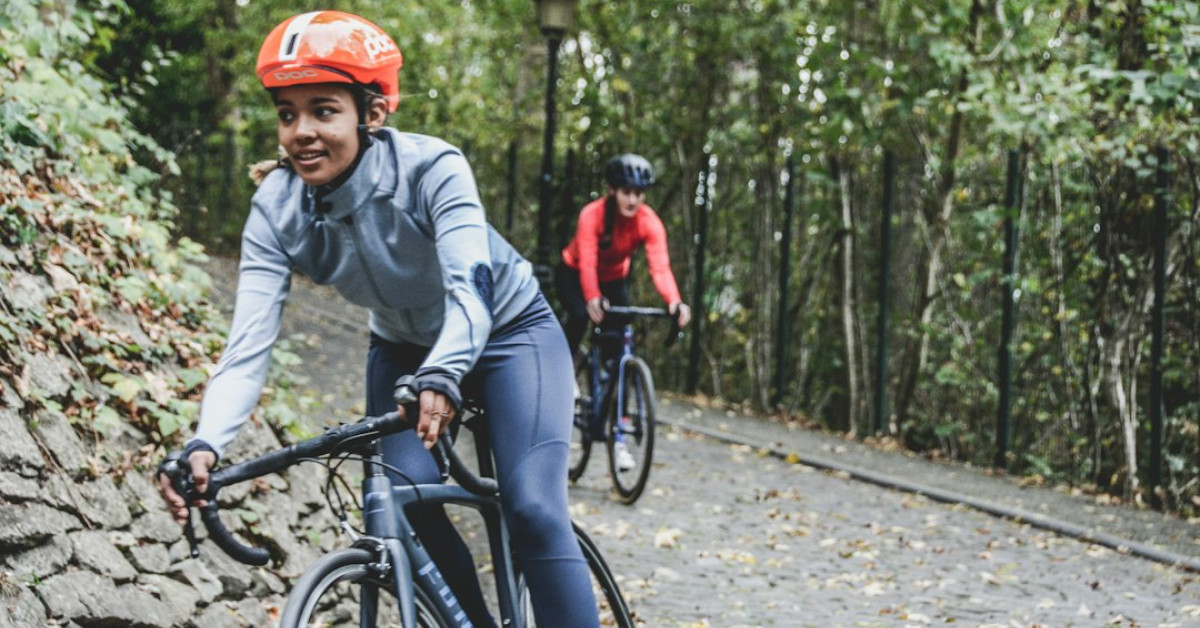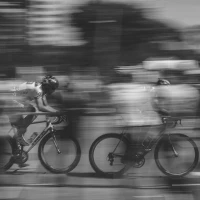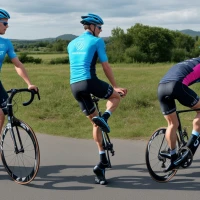Cycling has always been more than just a means to get from point A to B – it’s a gateway to fitness, freedom, and exploration. For those who have embraced the journey on two wheels, the most noticeable testimony of their commitment is often seen in the transformation of their legs. The metamorphosis from everyday limbs to powerful cyclist legs is both stunning and inspiring. This in-depth article takes you through the incredible before and after results of cyclings enthusiasts who have redefined their physique, one pedal stroke at a time.
When we talk about cyclist legs, we’re referring to the well-defined, muscular, and often vein-popping extremities that are the engine of a bicycle. Cycling, as a low-impact, high-reward activity, offers a myriad of benefits for both casual riders and serious athletes. Dive into the heart of cyclist culture as we explore the powerful transformation that occurs through dedication and the spin of the wheels.
The Anatomy of Cyclist Legs
Before we pedal deeper into the aspects of transformation, it is crucial to understand the anatomy of cyclist legs.
Muscles Involved in Cycling
The action of pedaling engages a symphony of muscles that work together to propel the cyclist forward:
- Quadriceps: These are the dominant muscles at the front of the thigh, powering the downstroke.
- Hamstrings: Located at the back of the thigh, they are essential during the upstroke phase.
- Glutes: The powerhouse muscles that are crucial for generating force.
- Calves: The gastrocnemius and soleus muscles that contribute to the push and pull during cycling.
Physiological Changes in Cyclist Legs
Regular and intensive cycling leads to various physiological changes in the legs:
- Hypertrophy: The increase in muscle size due to repetitive exertion.
- Endurance: Enhanced ability to sustain effort over a longer period.
- Vascularity: More prominent veins due to improved circulation and decreased body fat.
Transformative Power of Cycling
Delving into the transformative power of this sport, let’s analyze both the aesthetic and functional improvements of regular cycling.
Aesthetic Changes
- Muscle Definition: Cycling can significantly enhance the definition and tone of the legs.
- Fat Reduction: It’s an excellent way to shed excess fat and reveal muscle contours.
- Skin Tightening: Improved muscle mass and fat loss lead to tighter skin around the legs.
Functional Benefits
- Strength: Cyclists often experience increased leg strength, improving their overall performance.
- Endurance: The stamina built from long rides can be translatable to other areas of fitness.
- Power: The explosive force generated during sprints and climbs translates to faster, more powerful riding.
The Before and After of Cyclist Legs
Witnessing the before and after of cyclist legs underscores the tangible rewards of consistent cycling. Here we’ll discuss the journey from novice to seasoned rider and the visual and physical benchmarks along the way.
The Novice Cyclist
Initially, beginners might not see drastic changes. However, with consistent effort:
- Week 1-4: Early signs of endurance building and slight muscle toning.
- Month 2-3: Noticeable changes in muscle definition, especially in the quads and calves.
- Month 4-6: Potential fat loss and further muscle definition, veins might become more prominent.
The Accomplished Cyclist
For the seasoned cyclist, the transformation can be striking:
- One Year: Significant muscle hypertrophy, marked vascularity, and improved leg shape.
- Two Years: Legs might exhibit a level of definition and muscle mass akin to that of professional cyclists.
Training Routines for Ultimate Cyclist Legs
To achieve impressive cyclist legs, one must adhere to a structured training routine. Let’s explore some workouts that can catalyze this transformation.
On the Bike Training
- Intervals: Alternate between high-intensity bursts and recovery periods to build muscle and endurance.
- Hill Climbs: Gradients challenge your legs to develop strength and power.
- Long Distance Rides: These improve endurance and encourage fat metabolism.
Off the Bike Exercises
- Squats: Fundamental for building quadriceps and glutes.
- Deadlifts: Perfect for enhancing hamstring and lower back strength.
- Calf Raises: These target the calf muscles, improving push-pull action during cycling.
Nutrition and Recovery for Optimal Results
No transformation is complete without proper nutrition and recovery protocols. What you consume and how you rest are pivotal in shaping your cyclist legs.
Nutrition Tips
- Protein Intake: Vital for muscle repair and growth.
- Carbohydrates: Necessary for fueling long rides and recovery.
- Hydration: Keeping well-hydrated is crucial for peak performance and muscle function.
Recovery Strategies
- Active Recovery: Low-intensity cycling or walking can aid in muscle healing.
- Rest Days: Taking time off allows muscles to recover and grow.
- Sleep: Adequate sleep is essential for muscle repair and overall well-being.
Inspiring Real-life Transformations
By looking at real-life case studies of cyclist legs before and after, we can see the profound impact of cycling on the human body.
Case Study #1: The Commuting Cyclist
Good to marvel at, is the story of a daily commuter who not only saved money on transportation but sculpted an impressive set of legs along the way.
Case Study #2: The Weekend Warrior
A part-time cyclist’s journey from casual rides to conquering mountains and sportives, witnessing his legs evolve into tools of athletic expression.
Fine-Tuning Your Cycling Technique for Better Results
Technique is often the unsung hero of transformation. By optimizing your cycling technique, you can enhance muscle engagement and efficiency.
Positioning on the Bike
- Seat Height: Adjusting your seat to the right height to maximize leg extension.
- Pedal Stroke: Focusing on a smooth, circular pedal stroke to work all leg muscles equally.
Cycling Gear
- Padded Shorts: Reducing discomfort and allowing for longer rides.
- Proper Shoes: Ensuring power is directly transferred from your legs to the pedals.
The Sustainability of Cyclist Legs: Maintaining Your Gains
The transformation of cyclist legs is not just about achieving it but maintaining it. Consistency, smart training, and lifestyle choices are key.
Ongoing Training
- Staying committed to regular rides and workouts to preserve muscle tone and strength.
- Varying your cycling routine to challenge your legs in new ways and avoid plateaus.
Lifestyle Adjustments
- Balancing cycling with other forms of exercise to ensure all-around fitness.
- Managing diet to maintain lean muscle mass and avoid gaining fat.
Conclusion
The journey from ordinary to extraordinary cyclist legs is as much about the transformation of the body as it is of the mind and spirit. Cycling offers a unique blend of challenges and rewards, leaving an indelible mark on those who choose to take up its call. As we’ve outlined through anatomy, training, nutrition, recovery, and inspiring stories, the transformation into having muscular, toned cyclist legs is attainable and sustainable for those who are willing to embark on this rewarding journey.
To aspiring cyclists, or even experienced riders looking for a fresh wave of motivation, remember that the pedals await. There’s no better time than now to start turning the wheels towards your own stunning before and after cyclist legs transformation.










